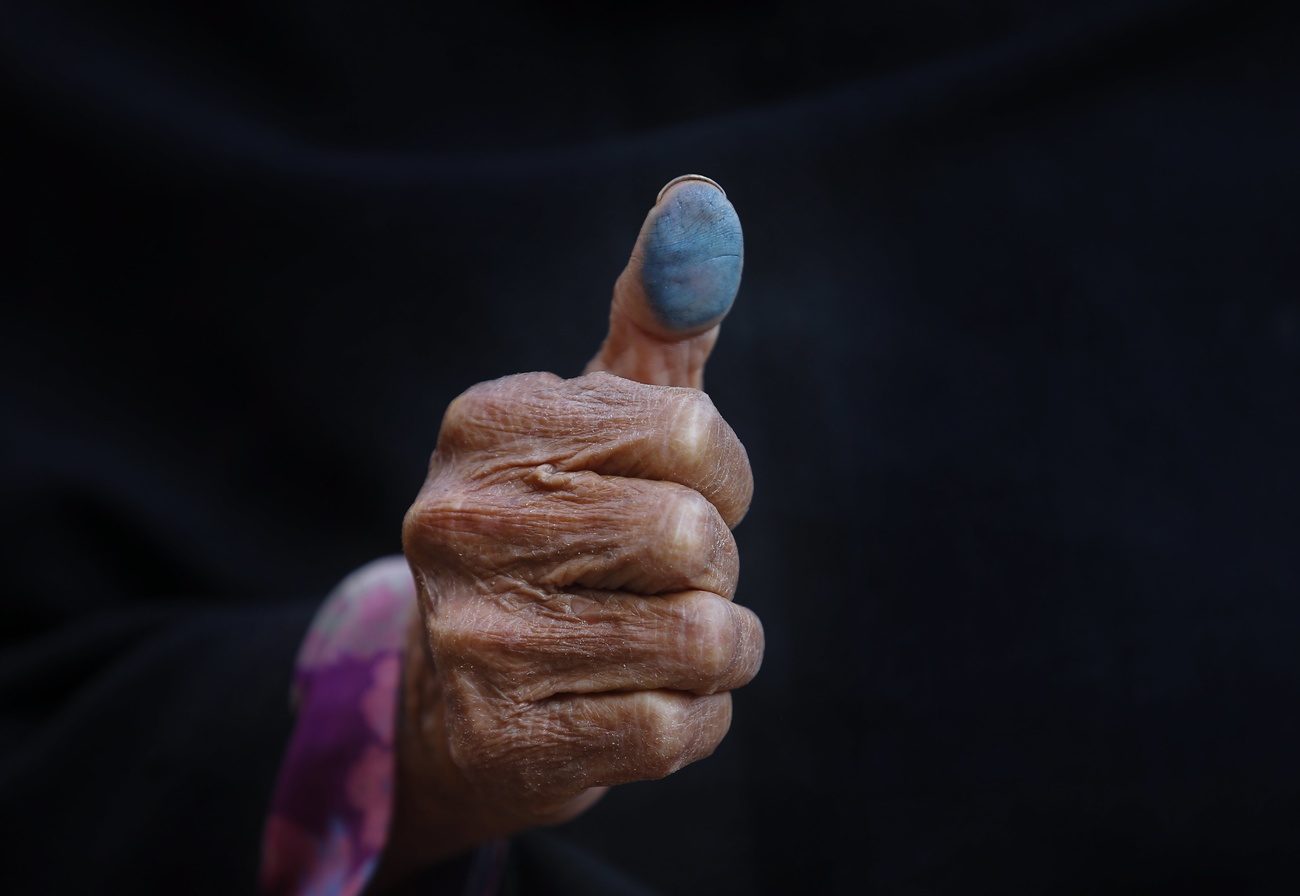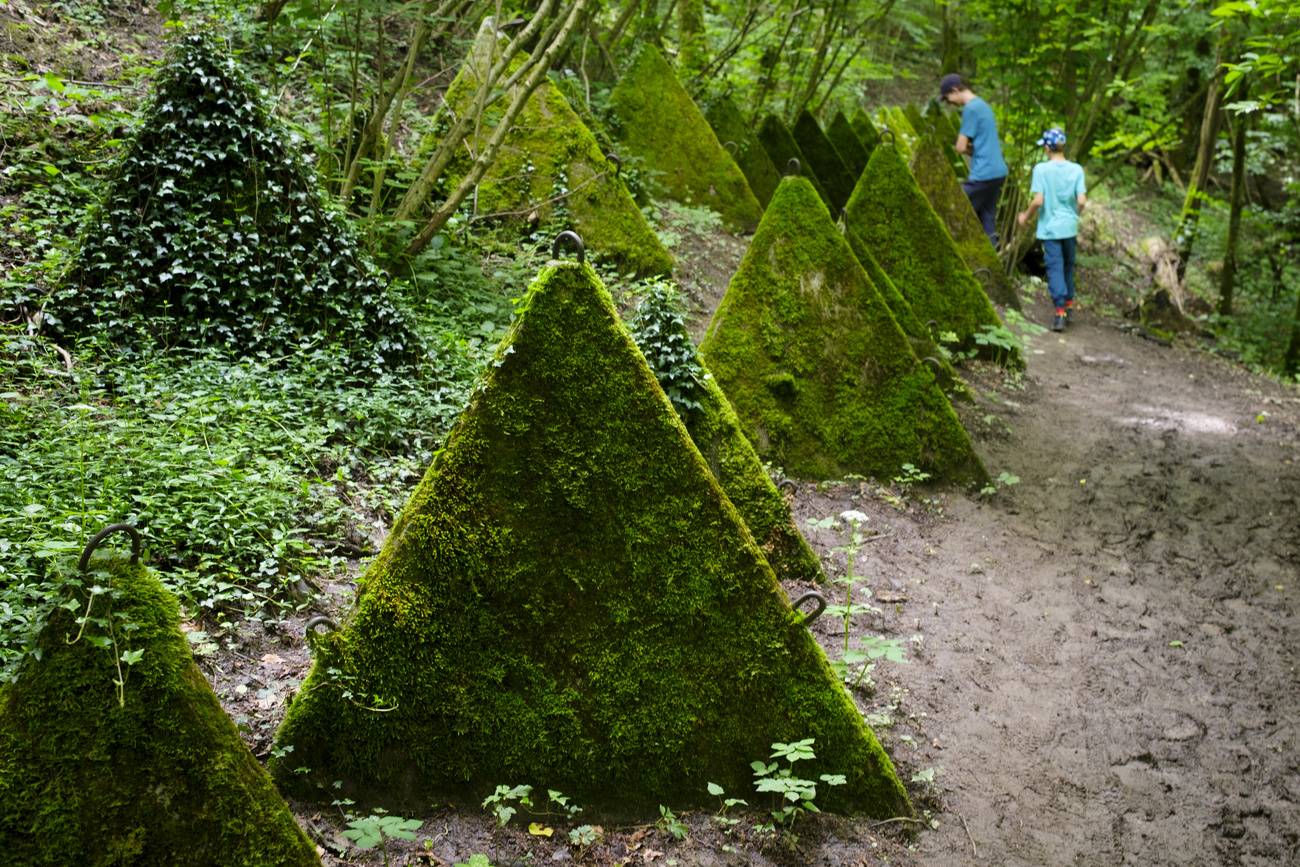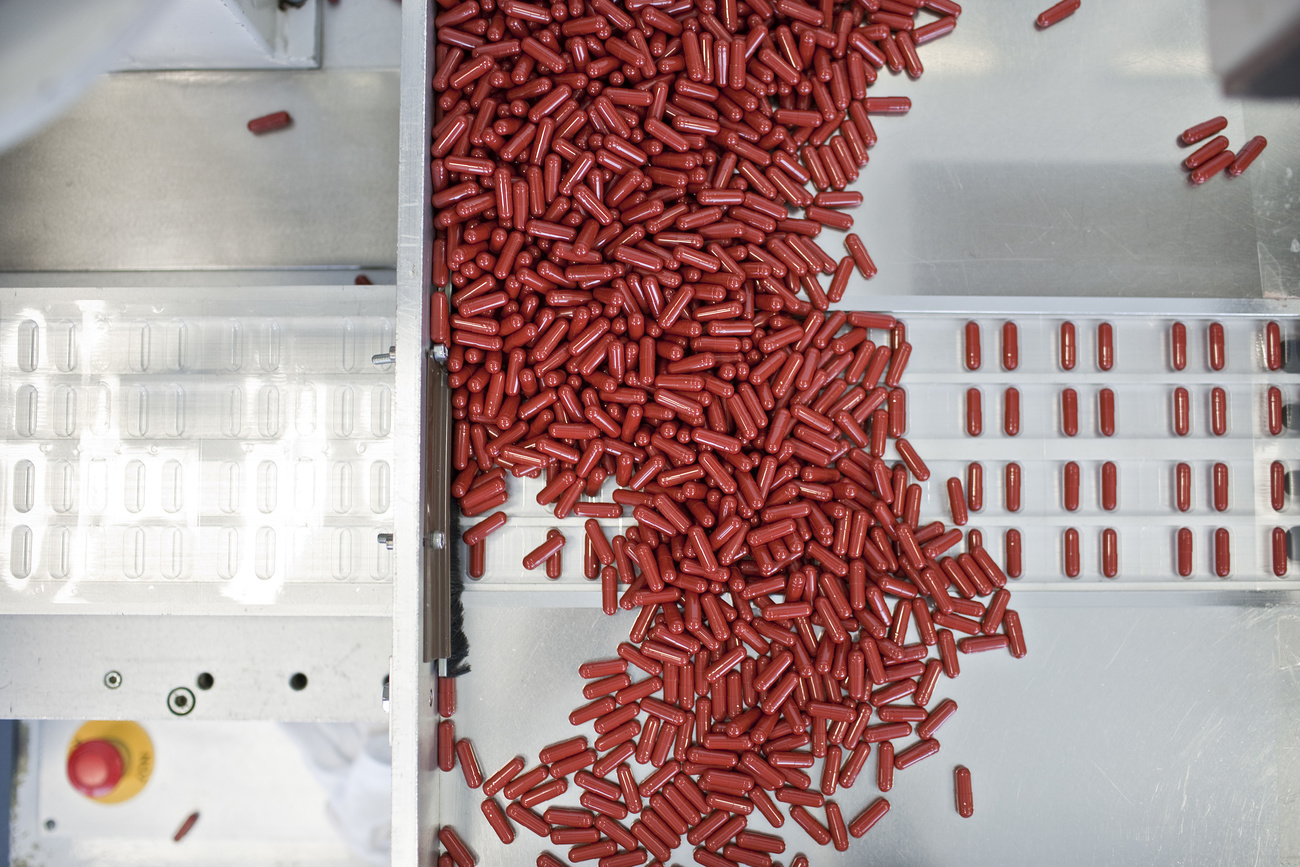
Exploring football’s “grey area”

"Offside", an exhibition on the beauty of the game as well as its less glamorous aspects, is running at the Geneva Museum of Ethnography's Conches Annexe.
The visitor is welcomed in semi-darkness by a collection of figures that evoke both football and society, from Fifa “pope” Sepp Blatter to hoodlums and gladiators.
The figurines were made in Abidjan, the largest city in the Ivory Coast, which provides international football with many players but also sees many of its children lose their way. For them, a career in a European club will always be out of reach.
Offside evokes the beauty of football but also the glittering stars and their Barbie-like “companions”.
Then there’s the ubiquitous money – of the players, sponsors and financiers. The exhibition also looks at the money of spectators, wittily juxtaposing a VIP box, with its connection to champagne, alongside a grandstand, which prefers beer and banners.
The extremism of the supporters is also addressed, including the flighty lyricism of those who see – or pretend to see – sport in general and football in particular as a way of saving the planet.
After several other exhibition spaces – supporters, nationalism, superstitions – we come full circle to a final room that underlines the conviviality that ought to surround games. It’s a chance to have a coffee while watching screens showing football news updates, thanks to swissinfo’s Euro 2008 dossier.
swissinfo shares the museum’s ambition of observing the phenomenon of football in its multiplicity, which explains why we are partners in this exhibition.
Christian Delécraz, head of the museum’s Conches Annexe, put the exhibition together with researcher Raffaele Poli.
swissinfo: How did you go about putting on this exhibition?
Christian Delécraz: It is also the museum’s role to evoke subjects that are in the news. Most museums consist of exhibitions with old sports shirts, photos about the glory of football or artists’ works that touch on football.
We said we needed to talk about integration, identity, ourselves, others, the phenomenon of fans and “ultras” – quite deep and heavy social themes. Finally, football is to some extent a pretext for talking about the complexity of the world.
swissinfo: How do you explain how football has acquired the status of the king of sports?
C.D.: We considered doing a space called “What next?” which would ask what would happen if football disappeared. Because this sport dates back to 1863. It originated in English private schools – that’s why there are 11 players in a team: there were ten people in a dormitory plus a dorm master.
But football quickly spread to the rest of society and has become the archetypal “people’s sport”. One can play it everywhere and with anything – even a tin can. And the rules are quite simple – apart from the offside rule!
Basically, everyone can play football. However over time it has increasingly fallen into the domain of marketing, advertising, business … even the stock exchange. The salaries of the players, the extreme media coverage – all this has triggered passion and professional interest in football all over the planet.
swissinfo: Which can lead to some problems…
C.D.: The most disadvantaged people dream of succeeding in Europe – like the Ivory Coast’s Didier Drogba, the star of the English club Chelsea. But for every success, how many fail? Raffaelle Poli has just done a doctorate on young sportsmen who are discovered in the southern hemisphere and brought to Europe. He regularly sends me mail from young Africans who would love to play in Europe who say it would save their lives.
This represents dreams, incredible aspirations. But even among those who come, how many fail to make a career out of football and end up living in secret because they can’t return home?
I was thinking of the title Between Dark and Light for this exhibition. The light side that illuminates the stadiums and the dark side with less beautiful things. But this title wasn’t right, because in the end what interests us is what comes in between. It’s the grey area – and there is a lot of it.
swissinfo: At the same time you evoke the hypothetical disappearance of football.
C.D.: With all the excess in football, you do wonder if it will keep inflating until it finally explodes. That said, while the official game of football originated in England, the practice of kicking a ball has been around for ages, in China and elsewhere. As long as man has existed, or for nearly as long, he has formed teams and kicked around something that rolls…
swissinfo, based on an article in French by Bernard Léchot
“Offside” runs until April 26, 2009 and can be seen at the Geneva Museum of Ethnography, Conches Annexe, Chemin Caladrini 7, Conches.
In preparing the exhibition the museum called upon several experts at the International Centre for the Study of Sport in Neuchâtel.
swissinfo is among the partners of the exhibition. Football news is presented in the exhibition on screens displaying swissinfo’s Euro 2008 dossier.
Geneva Museum of Ethnography has published Offside – Football and Society, a book edited by Raffaele Poli, for the exhibition.
It has a preface by ethnologist Christian Bromberger and contains an interview with the psychologist and former Swiss international player Lucio Bizzini.
It has 136 pages and 120 colour illustrations by Eric Lafargue and Johnathan Watts and drawings by Pierre-Alain Bertola.

In compliance with the JTI standards
More: SWI swissinfo.ch certified by the Journalism Trust Initiative



































You can find an overview of ongoing debates with our journalists here . Please join us!
If you want to start a conversation about a topic raised in this article or want to report factual errors, email us at english@swissinfo.ch.